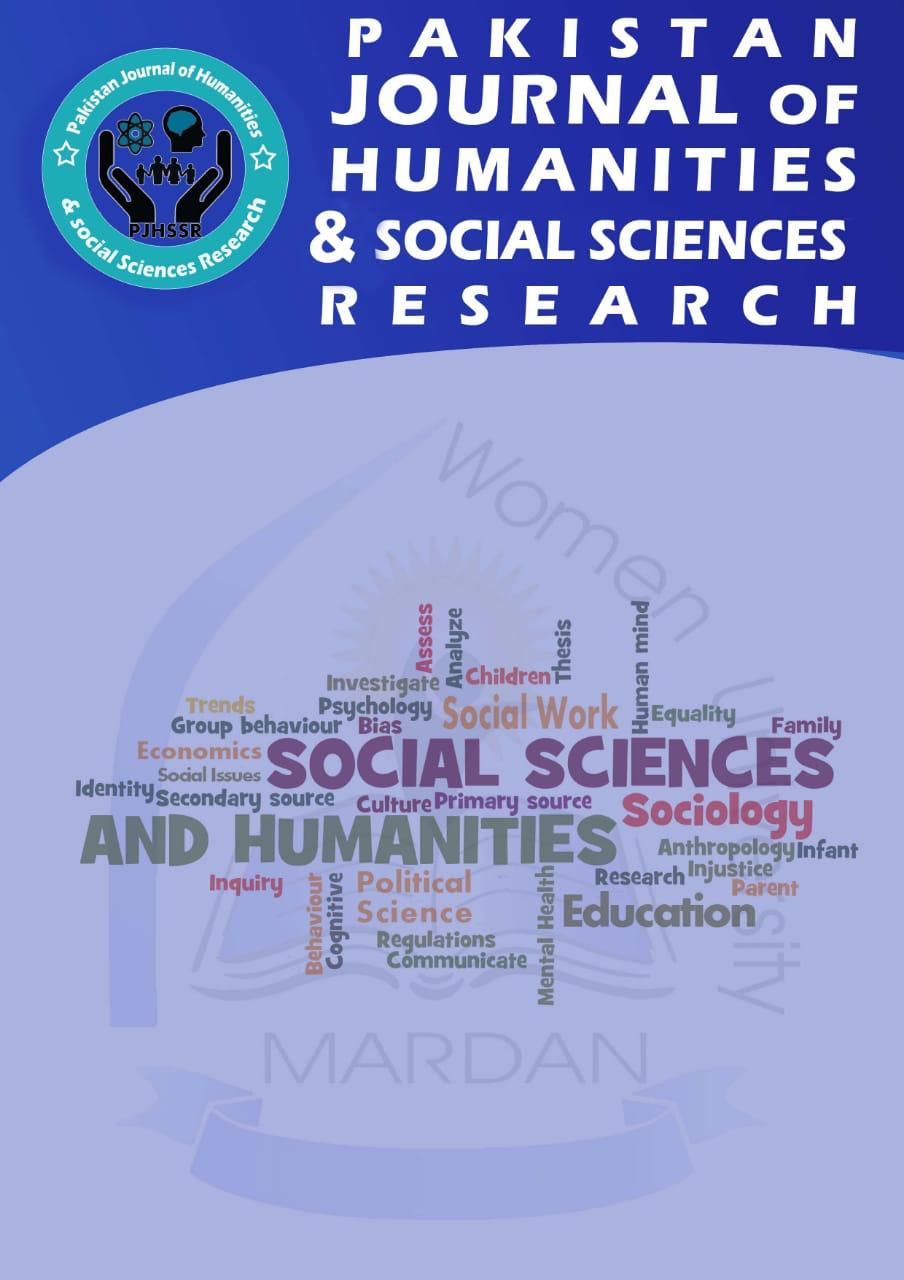DOI: https://doi.org/10.37605/pjhssr.v6i1.331
Abstract
This study seeks to determine the language attitudes of young bilinguals towards Kashmiri and Urdu, as well as their potential implications. Using the matched-guise technique, 34 Kashmiri- and Urduspeaking students from the University of Azad Jammu and Kashmir (AJK) were surveyed. Audio clips of each language were provided to assess the participants' attitudes towards Kashmiri and Urdu. On a Likert scale, participants evaluated a variety of personality traits of Kashmiri and Urdu audio speakers. The mean response scores were calculated and compared using SPSS and an independent t-test. The results indicate speakers have a more negative opinion of Kashmiri than Urdu. It suggests that the Kashmiri community has developed a negative attitude towards their mother tongue, which may eventually result in a community-wide language shift.
DOI: https://doi.org/10.37605/pjhssr.v6i1.332
Abstract
Curriculum plays a foundational role in shaping opinions, beliefs, and worldviews given its grounding in sociocultural ideologies. Therefore, gender representation in school curricula has been the subject of research across the world since the 1970s. Although a handful of studies have been conducted in Pakistan, they have consistently reconfirmed deep-seated gender bias in textbooks despite governmental pledge to gender equality in education through administrative and financial investment over the past few decades. While previous studies have focused on primary- and secondarylevel textbooks from individual provinces, the current study reviews most recent higher-secondary English textbooks taught in schools and colleges affiliated with 8 KP boards as well as FBISE hence their impact on a large number of young men and women about to embark on professional journeys. Broadly informed by the theory of Anti-Oppressive Education (Kumashiro, 2000), this qualitative research has used directed content analysis to explore gender representation in the selected textbooks to conclude that despite governmental commitment to empower women through education, these Grade XI and XII textbooks launched in 2020 and 2021 respectively, fail to eliminate gender inequality from the curriculum. The article concludes by providing recommendations for systematic elimination of gender bias from the curriculum.
DOI: https://doi.org/10.37605/pjhssr.v6i1.333
Abstract
COVID-19 has swiftly surpassed all borders. It has become a worldwide source of human infection, with all media companies exchanging breaking news and providing the most recent data from all nations. Consequently, people have suffered more significant discomfort, sadness, and violence due to excessive media exposure and information intake. The study intended to evaluate the function of exposure to the media and its detrimental influence on students’ mentalmainlyticularly through the mediation of worry and intolerance of ambiguity. Consequently, worry and uncertainty significantly moderate students’ mental health through the excessive intake of information (media exposure). A structural model based on these compounds was proposed. The research indicated a substantial relationship between the factors (media exposure, worry, intolerance, depression, and aggression). The outcomes of the investigation revealed no significant differences between men and women. This research is unique in developing a theoretical model describing the significance of media exposure, which will instill anxiety, and anxiety will lead to ambiguity, negatively impacting students' mental health.
DOI: https://doi.org/10.37605/pjhssr.v6i1.334
Abstract
This research paper presents a study on the perception mapping of coastal communities in Baluchistan, converging on their socioeconomic issues associated with the China-Pakistan Economic Corridor (CPEC). The CPEC is a significant infrastructural project that aims to enhance connectivity between China's western region and Pakistan's Gwadar port, located in Baluchistan province. This connectivity will have certain impact in the region; specially the adjoining areas of Gwadar Port and the roads/ highways leading to Gwadar. This study focuses on understanding the perceptions of coastal communities towards the socioeconomic impact of CPEC, as it has the potential to bring both positive and negative changes to the region. The objective of this study is to understand the apprehensions and perceptions of the coastal communities in Balochistan regarding socioeconomic implications of the CPEC. To attain this objective, mixedmethods approach has been adopted; incorporating both qualitative and quantitative data collection techniques. Semi-structured interviews, focus group discussions, and surveys have been conducted to gather primary data from the local residents, government officials, and other stakeholders. The findings reveal a diverse range of perceptions among the coastal communities regarding the socioeconomic issues related to CPEC. While some participants expressed hope and confidence about the potential economic benefits and improved infrastructure, while others raised concerns about environmental degradation, displacement, and inequitable distribution of resources. These findings have implications for policymakers, project developers, and community stakeholders, highlighting the need for inclusive development strategies, environmental safeguards, and transparent governance mechanisms to address the concerns and leverage the opportunities associated with CPEC. The analysis of this study also identifies key factors influencing t
DOI: https://doi.org/10.37605/pjhssr.v6i1.335
Abstract
In the wake of the forced mass displacement of people due to the outbreak of wars, the scintillating tale of the titular character in Euripides’ play, Medea has found new meanings in the post-modern world. This research paper is an endeavor to study Medea along the trajectories of postcolonial discourse to suggest that she is a displaced outsider and a symbol of post-colonial survival. This paper argues that Medea’s act of infanticide is not a monstrous act as she was forced to refashion her identity as an outsider and a foreigner. Therefore, by killing her own children, she strikes a blow against the system and in this process, she reclaims her own dignity. In fact, for Medea, it serves as a means of self-assertion. Bhabha’s (1994) theory of Hybridity will furnish the main theoretical lens to critically evaluate the text through close reading. Though critical literature has critiqued Medea’s act of defiance, her act of infanticide has not been analyzed in a post-colonial context. Her self-assertion allows her to transcend spatial and temporal bounds. The study of Medea’s character will help readers understand cultural heritage and the dominant colonial power which Jason represents.
Volume No. 06
Issue No. 01

